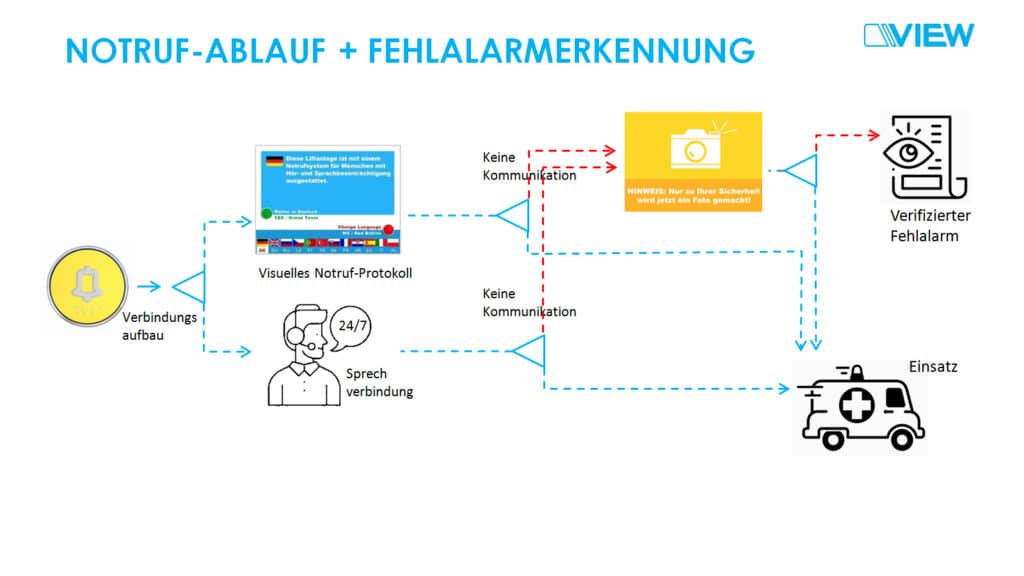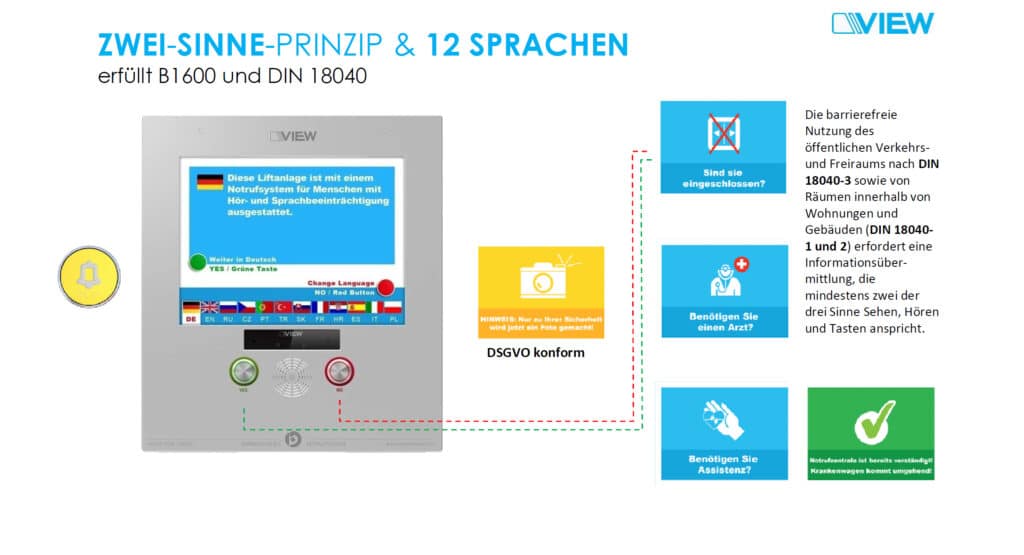The barrier-free elevator emergency call based on the two senses principle
Barrier-free accessibility and usability for people with cognitive impairments is absolutely essential, especially in dangerous situations.
The barrier-free use of public transport and open space in accordance with DIN 18040-3 as well as rooms within apartments and buildings (DIN 18040-1 and 2) requires information to be transmitted that addresses at least two of the three senses – sight, hearing and touch.
The 2-senses principle (according to ÖNORM B 1600: 2012, 8.2.2) states that information must always be clearly presented for two complementary senses.
Elevator emergency call system for deaf or severely hard of hearing people, offers a visual communication option with intuitive operation. If the emergency call via the voice-based system fails, the visual emergency call system is activated. The control center can use the screen to communicate with the trapped person using standardized question-and-answer dialogs.
The two senses principle is state of the art.
Non-binding inquiriesThe two senses principle gives people their right to communicate in emergencies
Being locked in an elevator is an exceptional situation to which people react very differently. While one person remains relatively relaxed, the other may experience a racing heart, panic, sweating or shortness of breath. If this is not counteracted, it can lead to a serious emergency for people with health problems. The most important thing for those affected in this situation is the feeling of not being alone.
The UN Convention on the Rights of Persons with Disabilities obliges the signatory states to ensure that people with disabilities have equal access to the physical environment, to means of transport, information and communication as well as to other facilities and services that are open to the public or are made available to them.
In the digital age, the elevator emergency call must not stop at the analog level
Ultimately, non-disabled people also use one sense or the other to advantage, e.g. B. ringtones or vibrating alarms on mobile phones. The language itself is also a barrier – especially in emergency situations. Therefore, the requirement for the contemporary elevator emergency call is both the two-sensory principle and multilingualism.


